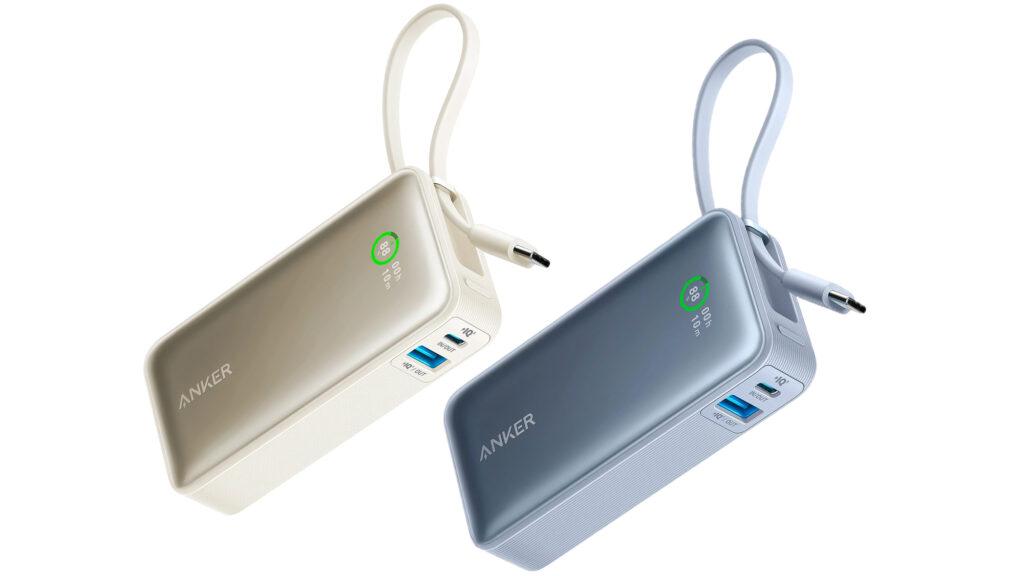A blanket of fresh snow can help make the holidays merry and bright, but when too much of the white stuff starts to fall, it can also bring power outages with it. You can be a bigger hero than Santa this holiday season by gifting friends and family the chargers and other emergency tech they need to keep their electronics running should the power grid take its own holiday this winter.
The Messenger may earn a commission from links on this page.
Whether you just want to help someone extend the battery life of their smartphone, or keep a fridge running so a festive meal doesn’t go to waste, here are some powerful gifts that the tech dependent in your life will appreciate.
Best portable phone chargers
Anker Nano Power Bank: With the iPhone 15 finally showing up to the USB-C party, accessory makers no longer have to worry about catering to multiple charging cable standards. The $50 Anker Nano Power Bank features a built-in USB-C charging cable (that doubles as a carrying strap), a 10,000mAh battery large enough to fully recharge many smartphones twice over and a hidden display revealing just how much power it has left to give.
Belkin BoostCharge Magnetic Portable Wireless Charger 10K: You’ll need your smartphone more than ever when the power goes out. To keep it alive for as long as possible, iPhone users will want to consider the $60 Belkin BoostCharge Magnetic Portable Wireless Charger 10K, which puts a 10,000 mAh battery — enough for at least a couple of full recharges — into a smartphone-sized wireless charging bed with MagSafe, so the iPhone can still be held and used while it juices up.
Anker Prime 20,000mAh Power Bank: Power outages always seem to schedule themselves just before an important deadline. The $130 Anker Prime 20,000mAh Power Bank can prolong the life of two laptops at the same time with 100W charging speeds delivered through two USB-C ports simultaneously. A USB-A port also offers compatibility with older devices. The power bank even incorporates a hidden display, providing information about its own charge level and how much power it’s delivering through each of its three USB ports.
Best rechargeable batteries
Mpowerd USB AA Rechargeable Batteries: Regular batteries sell out fast during a power outage. Mpowerd’s $30 (for a four-pack) AAs are not only rechargeable, but they can be topped off using a standard USB port, allowing them to be charged using the same backup batteries that keep your other electronics on life support.
Dewalt USB Charging Kit: One oft overlooked source of power during an outage are power tool batteries. Although specifically designed to attach to mounts on the bottom of tools, Dewalt offers a $79 USB kit that can be clipped to its batteries, allowing them to recharge any electronic device that can be topped off over USB.
Portable power for power-hungry devices
BioLite BaseCharge 600: To keep devices that require a connection to an AC outlet running, you need something bigger than what can be slipped into a pocket. The $420 BioLite BaseCharge 600 offers 622Wh of power, which is enough to keep a 55-inch TV running for six hours, a Wi-Fi router powered for over two days, or a laptop recharged nine times over. For convenience, it also offers a wireless charging pad on top, for smartphones.
Anker Solix F2000: Imagine a cooler stuffed full of rechargeable batteries instead of ice and drinks. That’s the general idea behind the $1,400 Anker Solix F2000, which has wheels and a telescoping handle similar to a suitcase, so it’s easier to move around. It’s heavy, but it also delivers enough juice (2,048Wh) to run power-hungry appliances like microwaves, washing machines, and even refrigerators for several days.
Jackery Explorer 3000 Pro Portable Power Station: Although engineered as an RV friendly portable power source for campers, the $2,800 Jackery Explorer 3000 Pro is also a good choice as an emergency source of home power. It offers more capacity than the Anker Solix F2000 (3,024Wh compared to 2,048Wh) but can be fully charged from a wall outlet in about two-and-a-half hours, or from an array of solar panels (six 100-watt panels) in six to seven-and-a-half hours.
Indefinite sources of backup power
BioLite SolarPanel 5+: Most portable chargers are useless bricks when they run out of power, but the $75 BioLite SolarPanel 5+ pairs a compact solar panel with a 3,200mAh battery. That’s a little less capacity than what’s needed to fully recharge most smartphones, but the SolarPanel 5+ can be left in the sun to charge itself up again, or to slowly recharge a connected device, providing power for as long as an outage lasts.
Etón American Red Cross FRX3+: A battery-powered radio is a useful device to keep on hand during a power outage, helping to access broadcasts about dangerous weather or other emergencies. Etón’s $60 FRX3+ offers that, but adds an LED flashlight, a flashing red emergency beacon and a built-in 2,600 mAh battery with USB ports for charging other gadgets. It can be recharged indefinitely using a built-in hand crank, which can also be used to charge other devices over USB, if you’re willing to put in the work.
BioLite CampStove 2+: For $105, BioLite’s CampStove 2+ provides more than just a convenient way to boil water or heat meals during a blackout. Instead of relying on propane or other fuels, the CampStove 2+ burns biomass like sticks and twigs, which are easily scavenge-able. The heat it produces is also converted into electricity to charge a built-in 3,200 mAh battery, or provide 3-watts of power through a USB port. It’s not the fastest way to charge your phone, but you won’t care when the power’s gone.
